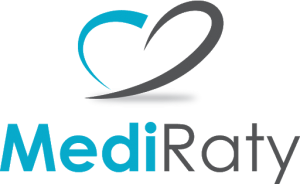Intravitreal injections
PricelistGENERAL INFORMATION
Intravitreal injections are injections that are performed into the vitreous. A non-expert would call it an ‘injection into the eye,’ and indeed it is an injection into a carefully selected spot in the eyeball. The injection is performed under local anesthesia, so it doesn’t hurt at all. Not counting the time it takes to dilate the pupil, the intravitreal injection itself takes literally two minutes.
Indications for intravitreal injections:
- Exudative-hemorrhagic AMD (wet form of age-related macular degeneration),
- Central Retinal Vein Occlusion (CRVO),
- Diabetic Macular Edema (DME),
- Choroidal Neovascularization (CNV) in patients with high myopia
- other diseases with abnormal neovascularization, such as Coats’ disease.
The main goal of intravitreal injection with anti-VEGF preparations is to inhibit or slow down choroidal neovascularization and seal the vascular endothelium.
PRACTICAL INFORMATION
Intravitreal injections are made with a very thin needle, which the doctor inserts into the vitreous body (the jelly-like substance that fills the eyeball). This is where the procedure got its name. During the procedure, the patient does not feel pain, as the eye is locally anesthetized beforehand. Injections are performed in sterile conditions of the operating room.
Treatment regime depends on the disease. It often involves a series of injections, the number of which, as well as the length of intervals and the duration of treatment is determined by the doctor, who also selects and prescribes the appropriate drug.
Recommendations for the patient:
- Although the injection itself takes about 1-2 minutes, an hour or so should be reserved for the appointment. This is because it takes quite a lot of time to examine and prepare the patient before the injection is administered.
- Preparing the patient for the injection involves the administration of antibiotics and medication that disinfects the surface of the eye.
- The patient can leave the Clinic immediately after the injection.
- Driving after the injection is not recommended.
What is wet AMD?
Iniekcje doszklistkowe oka preparatami anty-VEGF to obecnie najpowszechniejsza i najskuteczniejsza metoda leczenia plamki żółtej, tzn. wysiękowo-krwotocznej postaci AMD, czyli mokrej postaci zwyrodnienia plamki związanego z wiekiem.
AMD (z angielskiego age-related macular degeneration) to zwyrodnienie plamki związane z wiekiem. Jest ono przewlekłą i postępującą chorobą oczu, prowadzącą do uszkodzenia centralnego widzenia. Może nawet, w przypadku dużego krwotoku pod siatkówkę oka, doprowadzić do całkowitej ślepoty. AMD jest „chorobą czytania”, ponieważ pacjent zachowuje widzenie obwodowe, traci natomiast widzenie centralne, co uniemożliwia właśnie czytanie czy rozpoznawanie twarzy.
W AMD wyróżniamy dwie postacie: suchą i mokrą (wysiękową).
Wysiękowe AMD (mokra postać AMD) występuje rzadziej i dotyczy 10-20% chorych na zwyrodnienie plamki. Przebieg wysiękowego AMD może być gwałtowny, przez co może spowodować nagłą i rozległą utratę wzroku nawet w ciągu kilku tygodni. Wysiękowa postać AMD ma znacznie gorsze rokowania niż postać sucha, więc wymaga wdrożenia natychmiastowej terapii.
Intravitreal injections – what to expect?
W przypadku AMD wykonujemy serię trzech zastrzyków w miesięcznych odstępach, potem sprawdzamy postępy leczenia wykonując badanie OCT (badanie OCT, czyli Optyczna Koherentna Tomografia to ultranowoczesna i nieinwazyjna metoda podglądania tkanek w oku) i decydujemy o przyszłości leczenia.
Na tym bardzo często możemy zakończyć serię zastrzyków. Potem konieczna będzie okresowa (z reguły raz na 3 miesiące) kontrola lekarska i ewentualne zastrzyki przypominające. Zdarza się jednak, ze musimy kontynuować iniekcje, ale zazwyczaj w większych odstępach czasu.
Is it true that the Avastin, the drug used for intravitreal injections, is actually a cancer drug
Tak i nadal jest to skuteczny lek stosowany w onkologii. Wkrótce po dopuszczeniu stosowania Avastinu w terapii nowotworowej w 1997 roku, zastosowano go poza wskazaniami producenta (czyli z ang, off-label) u pacjentów chorych na AMD. Gdy zauważono poprawę widzenia po dożylnym podawaniu preparatu Avastin, zdecydowano się na iniekcje do ciała szklistego. Lekarze okuliści z wielu krajów notują jego wysoką skuteczność zarówno w leczeniu wysiękowej postaci AMD, jak i retinopatii cukrzycowej, niektórych postaci jaskry, cukrzycowym obrzęku plamki żółtej. Avastin ma działanie podobne do nieco droższego leku Lucentis.


